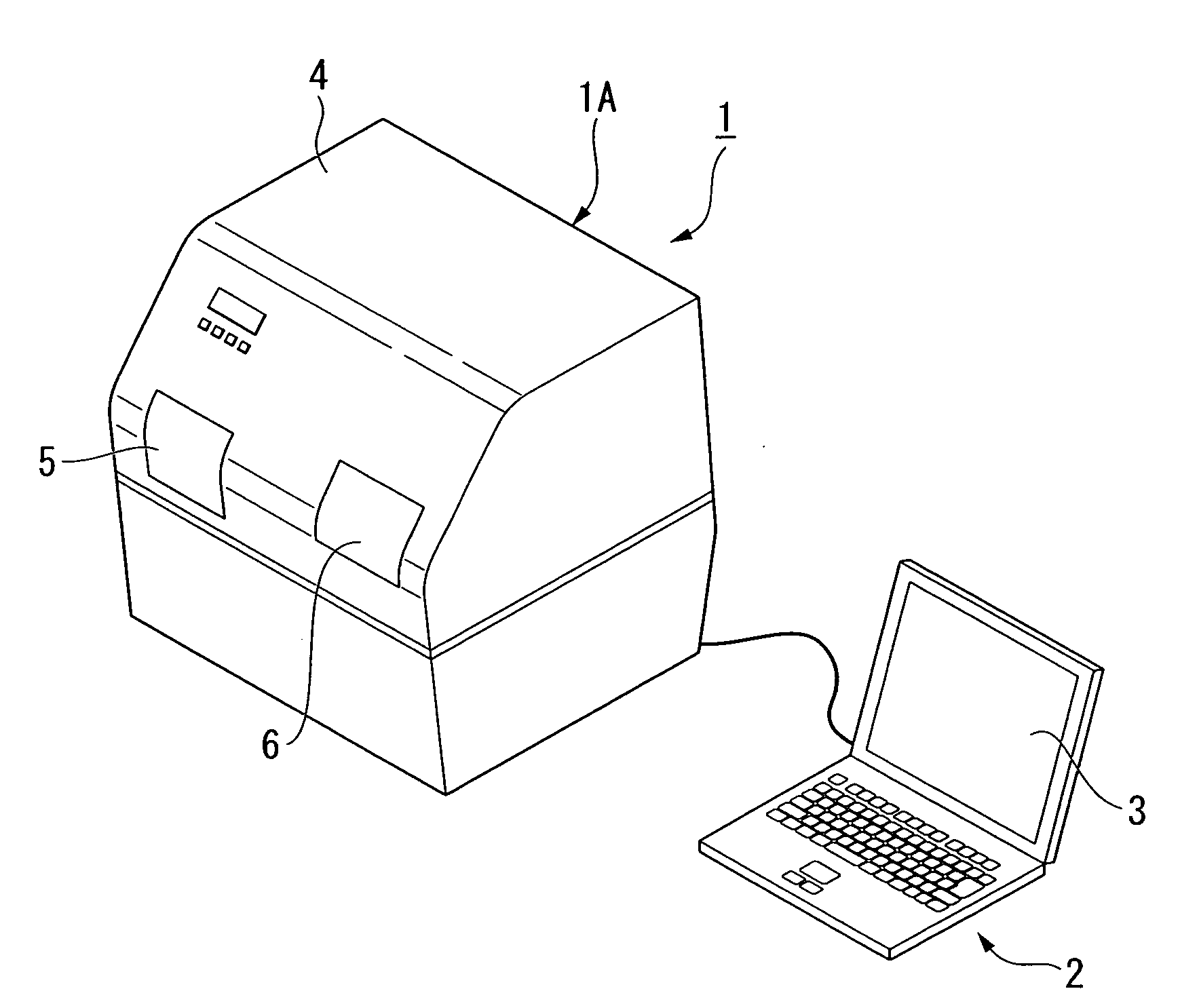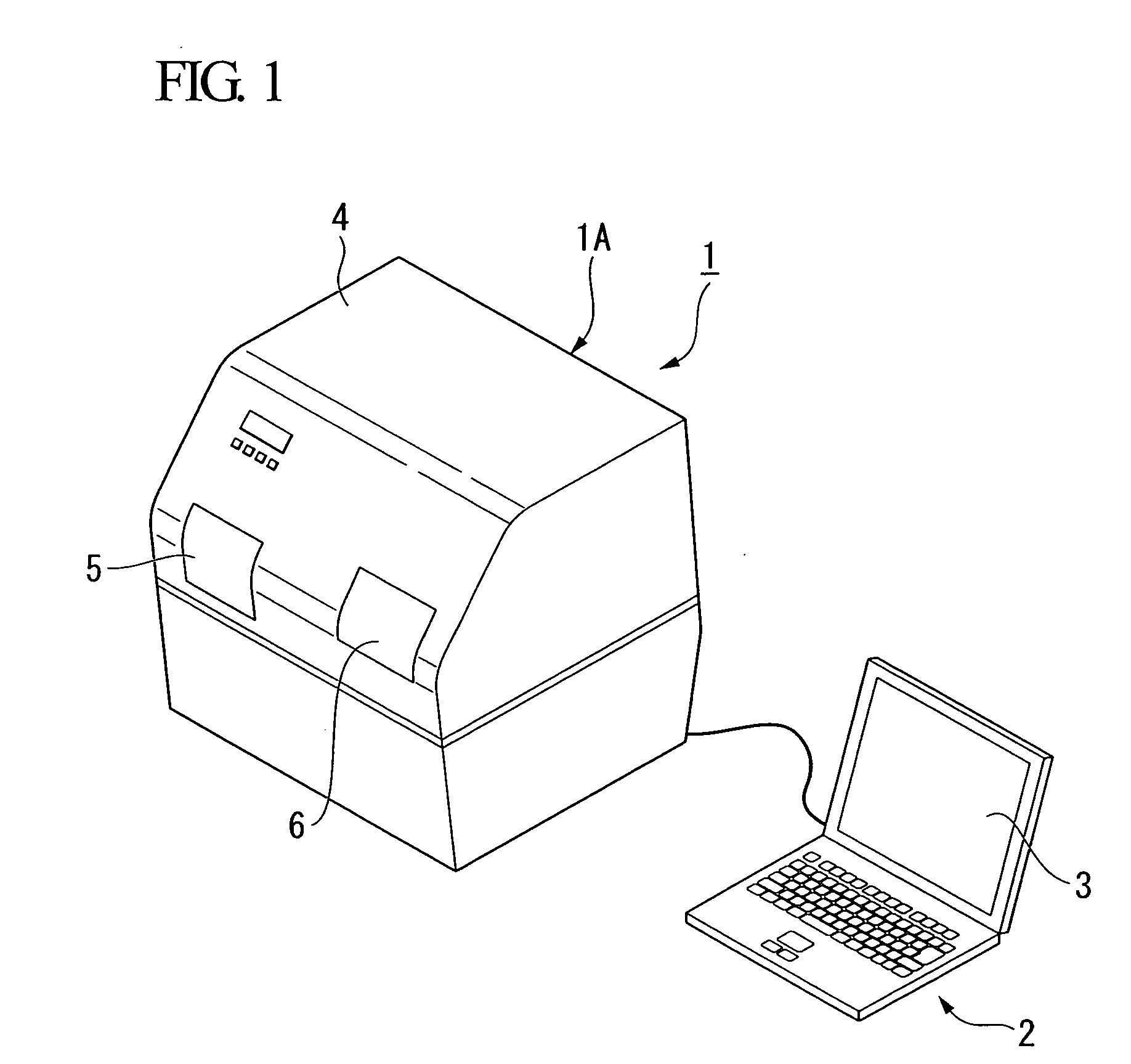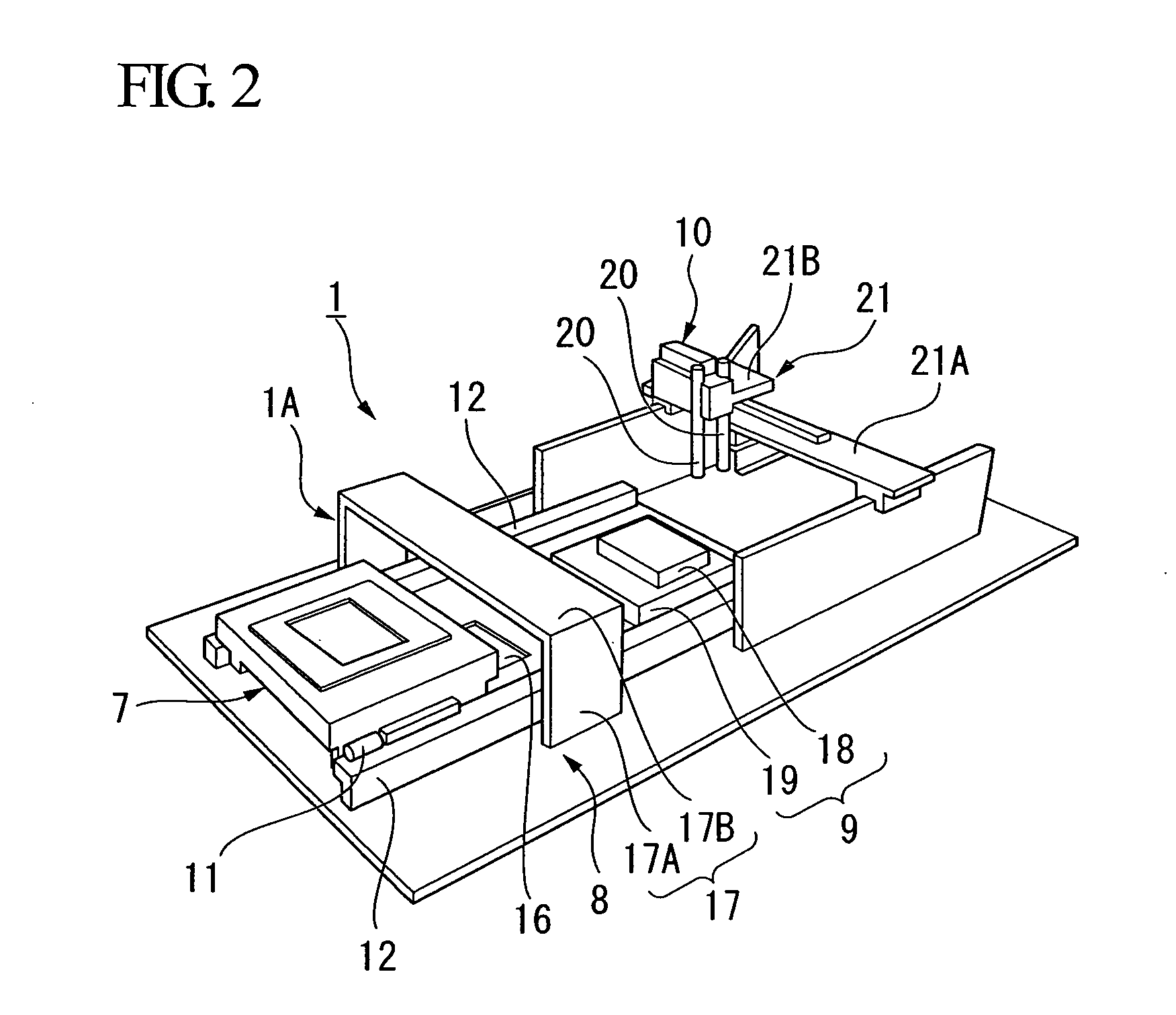Gene detection and determination apparatus, gene reactor, and incubator
- Summary
- Abstract
- Description
- Claims
- Application Information
AI Technical Summary
Benefits of technology
Problems solved by technology
Method used
Image
Examples
second embodiment
[0184]FIG. 10 illustrates the configuration of an incubator according to a second embodiment.
[0185]As shown in FIG. 10, in the incubator according to the second embodiment, a reaction sample is received in a DNA chip (container) 210 and the DNA chip 210 is set on a heat transfer block 220 to perform heating and cooling of the DNA chip 210. As a DNA chip, each form of the reaction container in the first embodiment may be used in addition to a known DNA chip. The heat transfer block 220 serves to transfer heat to the DNA chip 210 and is formed of a plate-shaped metal having good thermal conductivity. As the metal, it is preferable to use silver, copper, gold, aluminum, or an alloy including any of them. The heat transfer block 220 is supported by a chip base 270. The chip base 270 has an opening 270A which is smaller than the heat transfer block 220, and a thin recessed portion 270B having a thickness larger than the heat transfer block 220 is provided in the periphery of the opening ...
third embodiment
[0192]FIG. 11 illustrates the configuration of an incubator according to a third embodiment.
[0193]As shown in FIG. 11, in the incubator according to the third embodiment, a heat sink 242 is used as the cooling device 240 in the second embodiment and an air cylinder 262 is used as the moving device 260 in the second embodiment. The heat sink 242 is fixed to a stationary plate 264 of the air cylinder 262 with spacers 266 interposed therebetween. A thermally conductive sheet 241 is bonded to an upper surface of the heat sink 242. When a reaction sample is cooled, the heat sink 242 comes in contact with the heater 230 so that heat is dissipated from the heater 230. The heat sink is formed of a metal selected from aluminum, an aluminum alloy, and copper.
[0194]In addition, since other portions have the same configurations as those in the incubator according to the second embodiment, the same reference numerals are given and an explanation thereof will be omitted.
[0195]According to the thi...
fourth embodiment
[0197]FIG. 12 illustrates the configuration of an incubator according to a fourth embodiment.
[0198]As shown in FIG. 12, in the incubator according to the fourth embodiment, a cooling fan 244 which cools the heat sink 242 is provided below the heat sink 242 of the incubator according to the third embodiment. The heat sink 242 and the cooling fan 244 are fixed to a stationary plate 264 of an air cylinder 262 with spacers 266 interposed therebetween.
[0199]In addition, since other portions have the same configurations as those in the incubator according to the third embodiment, the same reference numerals are given and an explanation thereof will be omitted.
[0200]Since the heat sink 242 serves to only dissipate heat, there is a problem in that when the heat sink 242 is used as a single body, the temperature of the heat sink 242 rises due to repetition of heating and cooling and accordingly, the cooling speed is lowered.
[0201]In contrast, according to the third embodiment, the cooling fa...
PUM
 Login to View More
Login to View More Abstract
Description
Claims
Application Information
 Login to View More
Login to View More - R&D
- Intellectual Property
- Life Sciences
- Materials
- Tech Scout
- Unparalleled Data Quality
- Higher Quality Content
- 60% Fewer Hallucinations
Browse by: Latest US Patents, China's latest patents, Technical Efficacy Thesaurus, Application Domain, Technology Topic, Popular Technical Reports.
© 2025 PatSnap. All rights reserved.Legal|Privacy policy|Modern Slavery Act Transparency Statement|Sitemap|About US| Contact US: help@patsnap.com



